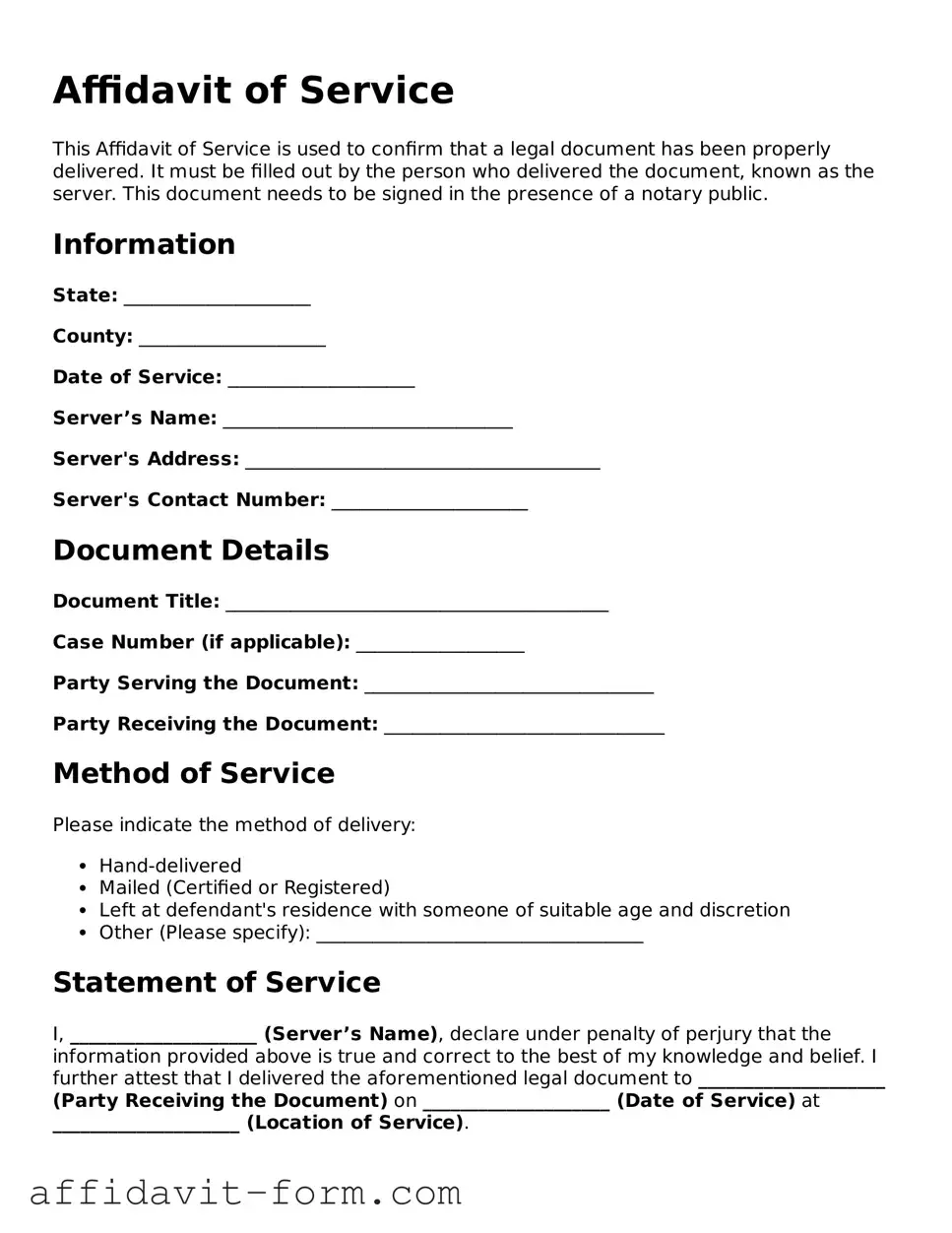Affidavit of Service
This Affidavit of Service is used to confirm that a legal document has been properly delivered. It must be filled out by the person who delivered the document, known as the server. This document needs to be signed in the presence of a notary public.
Information
State: ____________________
County: ____________________
Date of Service: ____________________
Server’s Name: _______________________________
Server's Address: ______________________________________
Server's Contact Number: _____________________
Document Details
Document Title: _________________________________________
Case Number (if applicable): __________________
Party Serving the Document: _______________________________
Party Receiving the Document: ______________________________
Method of Service
Please indicate the method of delivery:
- Hand-delivered
- Mailed (Certified or Registered)
- Left at defendant's residence with someone of suitable age and discretion
- Other (Please specify): ___________________________________
Statement of Service
I, ____________________ (Server’s Name), declare under penalty of perjury that the information provided above is true and correct to the best of my knowledge and belief. I further attest that I delivered the aforementioned legal document to ____________________ (Party Receiving the Document) on ____________________ (Date of Service) at ____________________ (Location of Service).
Signatures
______________________________________
Server's Signature
______________________________________
Date
This Affidavit of Service should be returned to the issuing party and filed with the court, if required, upon completion of service. A notary public must witness and notarize the server's signature.
Notary Public:
______________________________________
Signature
______________________________________
Commission Expiration Date
